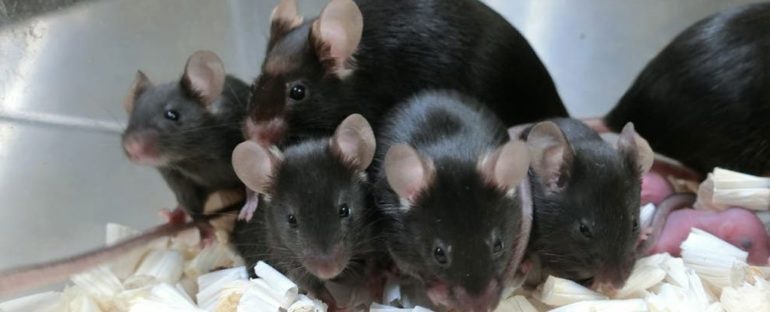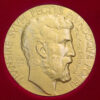Healthy “space pups” were born from freeze-dried mouse sperm that orbited the planet for nearly six years aboard the International Space Station (ISS), according to a new study.
That’s good news because DNA-damaging radiation on the ISS is more than 100 times stronger than on Earth. Beyond the ISS, which is still shielded from some radiation by our planet’s magnetic field, radiation is even stronger.
“It is very important to examine the effects of space radiation not only on living organisms but also on future generations before the ‘space age’ arrives,” the authors wrote in the paper.
“Space radiation may cause DNA damage to cells and concern for the inheritance of mutations in offspring after deep space exploration.”
If human sperm is similarly resilient in space, and if Earth becomes unlivable in the future, then freeze-dried sperm could potentially play a role in repopulating space colonies.
As climate change and potential apocalyptic futures push humans to look beyond the borders of our planet to possible livable planets or moons out in space, researchers are trying to understand whether space radiation would damage mammalian and other animals’ DNA and make it impossible to reproduce and keep humanity alive.
(Teruhiko Wakayama/University of Yamanashi)
Above: Embryos developed normally in the lab after fertilization with sperm that was freeze-dried and stored in space. They’re seen here in an eight-cell stage.
But there’s no easy way to study the long-term effects of space radiation on biological materials, the authors wrote.
It’s difficult to bring live animals or cells to the ISS, the nearest space hub for such research, because these cells need constant maintenance.
Most studies conducted on the effects of space radiation haven’t been done in space but in conditions mimicking space, according to the paper.
That’s a challenge because space radiation includes many kinds of energetic particles – such as solar wind, solar cosmic rays, and galactic cosmic rays – that can’t be reproduced on Earth.
In the new study, Japanese researchers discovered a novel method for studying radiation on mammalian sperm.
The researchers freeze-dried mouse sperm, a technique that allowed the sperm to be preserved at room temperature for over a year.
That enabled the team to launch the sperm to the ISS without needing a freezer. Dehydrating the sperm also kept launching costs low by using “light and small” ampules to store the sperm, according to the paper.
The sperm were launched to the ISS in August 2013, and once they arrived, astronauts stored them in a freezer at minus 139 degrees Fahrenheit (minus 95 degrees Celsius).
Some of the samples returned after nine months, some after two years and nine months, and the last of the samples came back after five years and 10 months – the longest biological samples have been kept at the ISS.
After nine months, the researchers found slightly more damage to the sperm’s DNA and male gamete nuclei than in healthy controls, but fertilization and birth rates were similar, they reported in a paper published in 2017 in the Proceedings of the National Academy of Sciences.
Long-term space effects
In the new study, the researchers examined the rest of the sperm samples.
They used what’s called “plastic nuclear track detectors,” a device made up of polymers that are sensitive to charged particles, and “thermoluminescent dosimetry,” a device that absorbs and traps the radiation energy to figure out how much radiation the sperm absorbed.
They then tested the amount of DNA damage to the sperm’s nuclei.
They found that the sperm absorbed about 0.61 millisievert (mSv)/day. In comparison, the NASA limit for astronauts exposed to radiation in low-Earth orbit is about 50 mSv/year, or 0.14 mSv/day, according to NASA.
The researchers found that the long-term storage aboard the ISS didn’t significantly damage DNA in the sperm.
After rehydrating the sperm, they injected it into female mice and found that the mice delivered eight healthy pups.
Those pups showed no gene expression differences compared with the controls – eight pups delivered from sperm preserved in the same way on Earth.
“So far, this is the only method that has been used to examine the effect of space radiation on the next generation,” the authors wrote.
The researchers also hit mouse freeze-dried sperm with X-rays on Earth and found that sperm exposed to such radiation could still produce healthy pups.
The researchers noted that although there are differences in the DNA damage caused by X-rays versus space radiation, they estimate that freeze-dried mouse sperm can be preserved on the ISS for over 200 years before becoming unviable.
Still, it’s not yet clear how the results would translate to human embryos.
The freeze-dried sperm showed “strong tolerance” of space radiation. The authors hypothesize that this could be due to the lack of water molecules inside frozen cells; radiation is thought to induce DNA damage through free radicals, produced as energetic particles interact with water molecules inside cells, the researchers wrote.
Still, the ISS isn’t a great example for deep space as it still orbits within Earth’s protective magnetic field. Densely ionizing particle radiation from deep space may cause more DNA damage to cells, according to the study.
Such experiments can be reproduced in, say, NASA’s planned Lunar Orbital Platform-Gateway, an uncrewed moon-orbiting station, they wrote.
What’s more, if this method turns out to be a reliable way of preserving sperm or germ cells, “in the far future, underground storage on the Moon, such as in lava tubes, could be among the best places for prolonged or permanent preservation because of their very low temperatures, protection from space radiation by thick bedrock layers, and complete isolation from any disasters on Earth,” the researchers wrote.
“These discoveries are essential and important for mankind to progress into the space age.”
The findings were published Friday (June 11) in the journal Science Advances.
Related content:
7 everyday things that happen strangely in space
4 mysterious objects spotted in deep space are unlike anything ever seen
The 12 strangest objects in the universe
This article was originally published by Live Science. Read the original article here.



